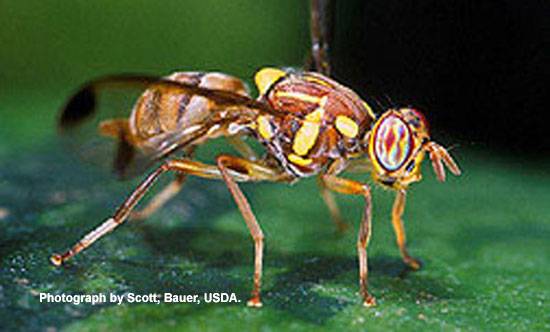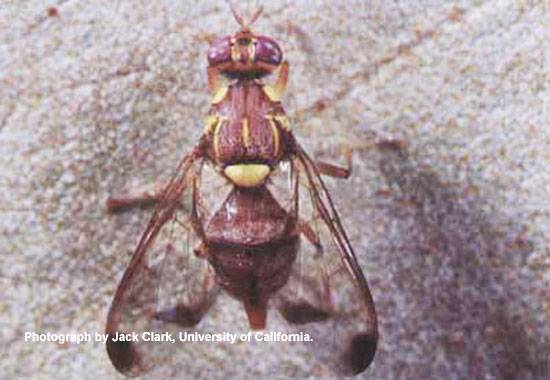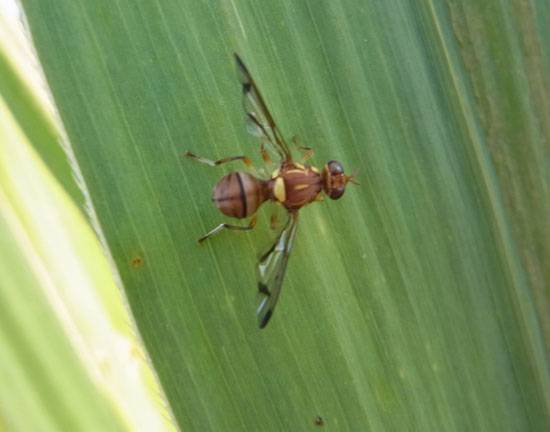Cucumber
Fruit Fly

Fruit Fly
Bactrocera cucurbitae

Fruit Fly
Bactrocera cucurbitae

Fruit Fly
Bactrocera cucurbitae
The melon fruit fly (Bactrocera cucurbitae) is a destructive pest of cucurbitaceous vegetables, found in temperate, tropical, and subtropical regions worldwide. Here are the key points about its distribution, damage, and management:
Host Plants:
- The melon fruit fly attacks 81 known host plants, with bitter gourd, muskmelon, snap melon, and snake gourd being most affected.
- Damage varies from 30% to 100%, depending on the cucurbit species and environmental conditions.
Environmental Preferences:
- The fly thrives when temperatures fall below 32°C, and relative humidity ranges between 60% to 70%.
- It primarily infests young, green, and soft-skinned fruits.
Damage Mechanism:
- Females insert their eggs 2-4 mm deep into fruit tissues.
- The maggots (larvae) feed inside the fruit, causing severe damage, and then pupate in the soil at depths of 0.5 to 15 cm.
Life Cycle:
- Eggs: Pure white, elliptical, and about 2 mm long. Eggs are often laid in young fruit or succulent stems.
- Larvae: White, cylindrical-maggot-shaped larvae pass through three instars, with the last instar growing to 7.5–11.8 mm in length. The larvae are distinctive due to a dark sclerotized line at the caudal end.
- Pupae: Pupation occurs in the soil beneath the host plant, typically at depths of up to 2 inches.
- Adults: Adults feed on plant juices, nectar, and honeydew. They can live for more than a year and produce up to 10 generations annually.
Reproduction:
- A hardy female can lay up to 1,000 eggs in her lifetime, typically in young fruit but also in stems of various hosts.
Management Strategies:
- Local Area Management: Techniques include fruit bagging, field sanitation, protein baits, and cue-lure traps.
- Wide Area Management: This can involve growing fruit fly-resistant varieties, augmenting biocontrol agents, and using soft insecticides.
- Temperature plays a crucial role in development, with warmer temperatures accelerating the life cycle and cooler temperatures slowing it.
Effective management of melon fruit flies requires a combination of these strategies to reduce infestation and protect crops.
